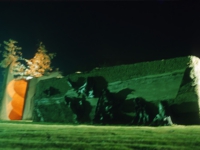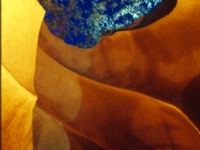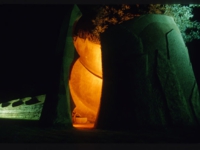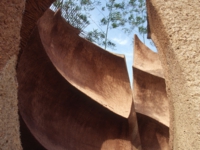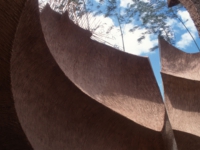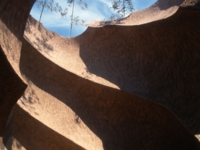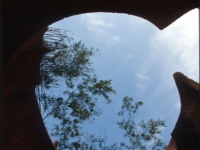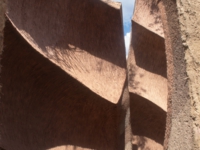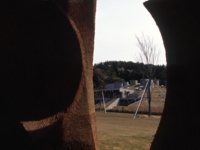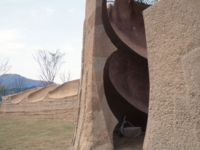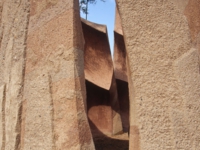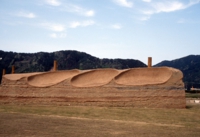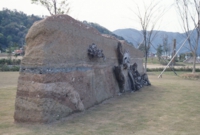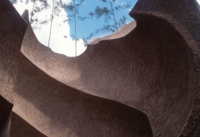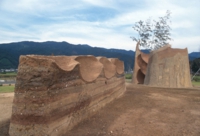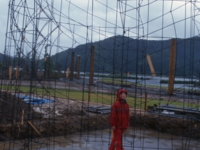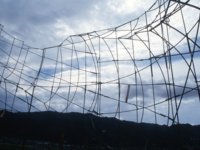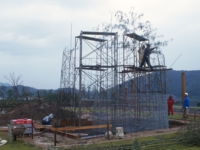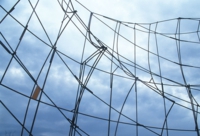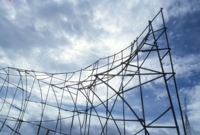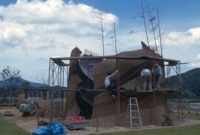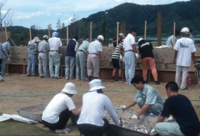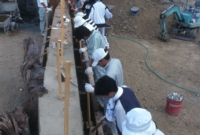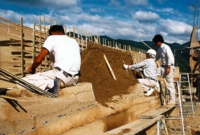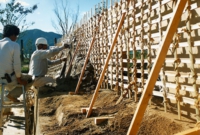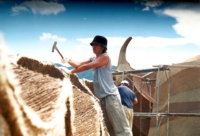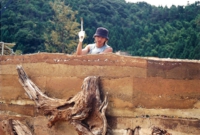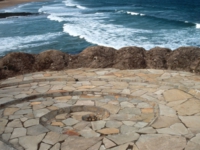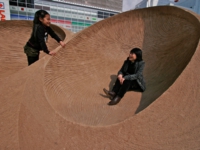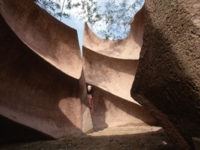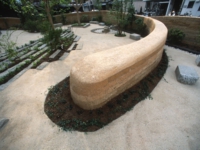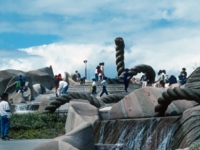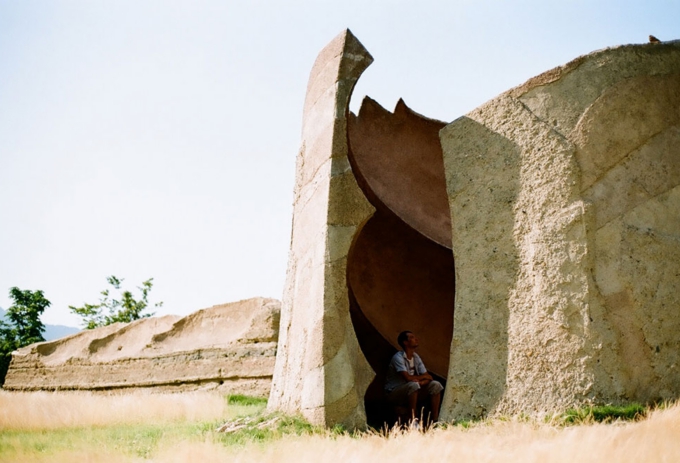
The time of Nawa -The Hollowness of Nawa
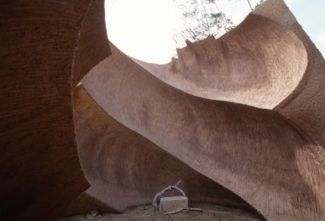
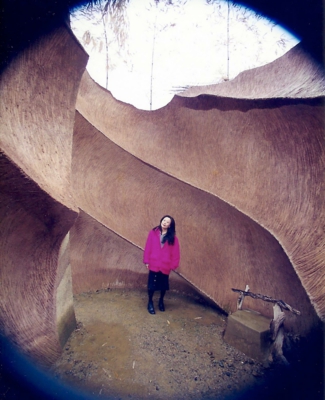
Photo by Yuna Yagi
Date: 1999. 4 ~9
Materials: Soil concrete,Sisal,Bamboo, reeds,
Mixed Media
Dimensions:w 6,7m x h 5,8m x d5.3 m
Site:Mikata-cho Johmon Museum Park, Fukui,Japan
Photo credit:Taira Iwakiri
Commissioned by: Mikata town office
I was invited to create the symbol monument for Mikata-cho Johmon Museum Park, as a site-specific public art intercommunicating with the architecture ofthe Mikata-cho Jomon Museum that was designed by Toshihito Yokouchi .
I started to research the local potentiality such as the energy of the local people,
the environment, the location and the history of Mikata town which is located in the north part of Kyoto and faces to the Japan Sea near five beautiful lakes. Environmental archeologists discovered one of the Johmon archeological sights in the town. Johmon was named after the Nawa ( rope )pattern because the people of the Johmon age made the oldest earthen vessels in the world on which Nawa were rolled and Nawa patterns were printed.
The Johmon culture of this area was a civilization of the mountains, sea and lakes around 7000 years ago.
They had universal wisdom about how to Co-live with nature and keep peace with great friendship.I think our civilization should learn from the Johmon culture and the spirit with which they respected the Nawa.
When the two spirals face the central axis of hollowness similar to the DNA of all living things, a Nawa is born. Nawa is a spiral energy which inter-links the cosmos, the earth and all life.
Nawa means oneness with variety and diversity, similar to the earth in the cosmos.
I would like to express this meaning of Nawa. That is the life of the earth beyond universal time and the spirits of the Johmon people for the symbol monument titled the time of Nawa-the Hollowness of Nawa. I created the hollow space which was the fossilization of gigantic Nawa as if a spiral umbilical cord of the earth.
When people go into the center of the space and see the sky and the stars from the bottom of the space, they become empty and tranquil. They find themselves going back to their own roots.
I thought it was very important that they enjoy the art work space and find various elements in the local environment and be proud of it in the Jomon Museum Park.
I used the workshop system for a part of the process when making it. For several days in the summer, the local people collected the elements such as shells, pebbles,reeds and bamboo from the lakes, mountain and seashore and we collaborated making the layers of the soil wall with the local materials and colorful soil from the different areas according to the old traditional technique born more than 6000 years ago. As I found my own original technique using soil and concrete to make the hollow space of the Nawa shape, I could design large-scale architectural sculpture in the future.
Artist Dr. Mariyo Yagi August 3, 2000
1999 - 2000ENVIRONMENTAL ART PROJECTS EARTH
Space-time "of the environmental sculpture" rope
Straw-rope pattern romance park symbol monument Mikata, Fukui-cho
Under Yagi's direction, local residents collected soil, reed, sisal,bamboo, and other materials from the surrounding area and helped her to build the works
soil/concrete walls, using a 6000 year old Johmon method.
I thought it was very important for the people to enjoy the artwork space, to find various elements in the local environment, and be proud of the town that they inhabit.
In the broadest sense, I am concerned with re-infusing spirituality and a profound sense of the cosmos into everyday experiences of lived public space.
Throughout my career; I have pursued innovative approaches in the fields of art and environmental design,with an enduring commitment to creative interaction, spiritual enrichment and the building of social community. I have worked to achieve tangible intimacy between space and persons between persons and between nature and persons so that human beings are no Longer viewers but active participants in the making of space.
Although I have worked internationally for decades, my artistic practice is deeply rooted in Asian spiritual traditions. My work is especially informed by Japanese ritual aesthetics, which have long emphasized that human beings and the forces of nature are active collaborators in the making and remaking of the lived universe.
She welcomes collaboration in her work in order to create a relationship between residence and art.Residences can commit to make a “new public treasure” in the community through such collaboration.
It was introduced to produce a monument in the park where he Jomon Museum which was designed by an architect Toshi Yokochi . I saw Jomon Museum plan and was the image of huge hollow cellar of soil looked like "Maman" "The Twine" which I produced before. I decided to make a concept that the center of the rope was hollow . I gathered soil around the local Lake Mikata from each place and roots of trees in Jomon period around 10000 years ago which was found under the earth of the local.
JOMON KNOWN FOR SOME OF THE OLDEST SEA-GOING vessels, the Johmon rolled Nawa,and Nawa patterns were printed on their boats. Nawa had two meantings
to the Johmon; one is the term for rope, the other is the name for spiritual entity.
Nawa is a spiral energy which interlinks the cosmos, life on earth beyond universal time. This sculpture is the fossilization of a gigantic Nawa, a spiral umbilical cord connected to the earth.
